Pooka: Solitary Spirit And Not Entirely Benevolent Prankster In Irish Folklore
A. Sutherland - AncientPages.com - One of the most famous creatures of Celtic folklore is the Pooka (or puca).
Pooka is a November spirit and it is worth mentioning that November-day is sacred to this creature. This staring phantom has many shapes. One time it is a horse, another time it appears as an ass or perhaps a bull, a goat, or an eagle.
 The Pooka promised Brian Boru , the High King of Ireland. He was the only one man has ever managed to ride the pooka.
The Pooka promised Brian Boru , the High King of Ireland. He was the only one man has ever managed to ride the pooka.
Ancient people’s beliefs say that if you treat the Pooka with respect, this creature will give you helpful advice or an important prophecy.
It is commonly believed that the Pooka has the power of human speech, and used it to lead people away from harm.
But if the Pooka is offended, it can vandalize your house and destroy crops, when it usually comes at night and enjoys creating mischief and havoc.
This creature seems to be the most feared faerie in Ireland and many people don’t really understand why, because there are no records of any incidents of a Pooka actually causing a human any harm.
This psychological fear in people who believe in them can be compared to the devil in Christianity that creates fear in Christians.
According to legend, a Pooka, which lives in the mountains and hills, is a quick and skillful shapeshifter, capable of assuming a great variety of terrifying or nice and good-looking and trustworthy forms. It may appear as a goat, dog, rabbit, goblin, but often, it takes a shape of a black horse with a flowing mane and luminescent golden eyes.
In this form, the Pooka wanders across vast areas of countryside, always at night, destroying gates and fences, damaging crops, and generally causing small disasters.
What's important is that no matter what shape it takes, its fur is almost always very dark or black.
There is not only one Pooka but many of them; they can be found in any rural location across Ireland, in the vicinity of small springs and mountainous lakes. Such locations are called by the Irish people ‘Pooka Pools’ or ‘Pollaphuca’, which means Pooka or Demon Hole.
Over the last thousand years, Christians have changed the name of certain Pooka Pools, which today are called St. Patrick’s Wells
The old belief in this fascinating prankster still exists, along with a lot of old customs and superstitions. If you would like to consult the Pooka, you can wait at night on November 1, (the Pookas Day). The creature appears and gives prophecies and all kinds of warnings to those who wish to consult it.
Though not classified as wholly malevolent, this spirit is considered to be a vicious prankster that really enjoys confusing and terrifying both people and livestock.
Tradition has it that only one man has ever managed to ride the pooka and that was Brian Boru, the High King of Ireland.
Using a special bridle containing three hairs from the pooka's tail, Brian managed to control the magic horse and stay on its back until, exhausted, it surrendered to his will.
The Pooka promised Brian Boru two things: firstly, that it would no longer torment Christian people and ruin their property, and secondly, that it would never again attack an Irishmen except those who are drunk or abroad with evil intent.
The spirit kept the promises but only over the intervening years. Later, it seems to have forgotten its bargain and began new attacks on properties and travelers on their way home and so it continues to this day.
Written by – A. Sutherland - AncientPages.com Senior Staff Writer
Updated on January 22, 2024
Copyright © AncientPages.com All rights reserved. This material may not be published, broadcast, rewritten or redistributed in whole or part without the express written permission of AncientPages.com
More From Ancient Pages
-
 Ancient Jericho – City Of Giants And Home Of The Mighty Gibborim
Biblical Mysteries | Jun 28, 2017
Ancient Jericho – City Of Giants And Home Of The Mighty Gibborim
Biblical Mysteries | Jun 28, 2017 -
 Face Of Neanderthal Who Lived 56,000 Years Ago Reconstructed
Archaeology | Nov 10, 2023
Face Of Neanderthal Who Lived 56,000 Years Ago Reconstructed
Archaeology | Nov 10, 2023 -
 On This Day In History: Comet Donati First Observed By Italian Astronomer – On June 2, 1858
News | Jun 2, 2016
On This Day In History: Comet Donati First Observed By Italian Astronomer – On June 2, 1858
News | Jun 2, 2016 -
 Were Mysterious Giant Ancient Mustatils In Saudi Arabia Used For Ritual Purposes?
Archaeology | Mar 16, 2023
Were Mysterious Giant Ancient Mustatils In Saudi Arabia Used For Ritual Purposes?
Archaeology | Mar 16, 2023 -
 Surprising Evidence Of 12,000-Year-Old Unknown Advanced Secret Knowledge Held By Elite Individuals – The Connection – Part 2
Ancient Mysteries | Feb 7, 2021
Surprising Evidence Of 12,000-Year-Old Unknown Advanced Secret Knowledge Held By Elite Individuals – The Connection – Part 2
Ancient Mysteries | Feb 7, 2021 -
 Tetzacualco – Mesoamerican Mini Model Of The Universe Discovered Underwater
Archaeology | Jan 4, 2018
Tetzacualco – Mesoamerican Mini Model Of The Universe Discovered Underwater
Archaeology | Jan 4, 2018 -
 31,000-Year-Old Skeleton Missing Foot May Show Oldest Amputation
Archaeology | Sep 7, 2022
31,000-Year-Old Skeleton Missing Foot May Show Oldest Amputation
Archaeology | Sep 7, 2022 -
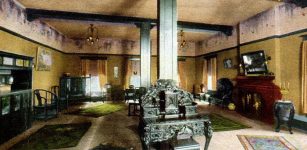 Archaeology Illuminates Chinese Businesses In Eugene
Archaeology | May 23, 2022
Archaeology Illuminates Chinese Businesses In Eugene
Archaeology | May 23, 2022 -
 Unique Female Viking Grave In Swedish Mountains Reveals Its Secrets
Archaeology | Jul 14, 2023
Unique Female Viking Grave In Swedish Mountains Reveals Its Secrets
Archaeology | Jul 14, 2023 -
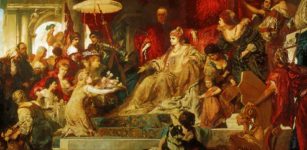 Tragic Reign Of Caterina Cornaro – The Last Queen Of Cyprus And Patron Of The Arts
Featured Stories | Jul 4, 2019
Tragic Reign Of Caterina Cornaro – The Last Queen Of Cyprus And Patron Of The Arts
Featured Stories | Jul 4, 2019 -
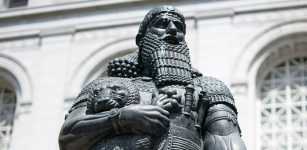 Ashurbanipal – Last Great Ruler Of Assyria And His Famous Well-Organized Library
Featured Stories | Jun 21, 2021
Ashurbanipal – Last Great Ruler Of Assyria And His Famous Well-Organized Library
Featured Stories | Jun 21, 2021 -
 Curly Hair Protected The Brain Of Early Humans And Helped It Grow
Human Beginnings | Aug 31, 2023
Curly Hair Protected The Brain Of Early Humans And Helped It Grow
Human Beginnings | Aug 31, 2023 -
 Angkor Wat: Pre-Industrial City’s Downfall And Climate Change
Archaeology | Apr 18, 2020
Angkor Wat: Pre-Industrial City’s Downfall And Climate Change
Archaeology | Apr 18, 2020 -
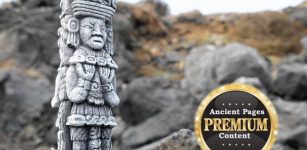 Mystery Of Giant Ancient Statues And A Vanished Civilization With Unusual Physical Characteristics – Strange American Connection – Part 2
Ancient Mysteries | Aug 20, 2020
Mystery Of Giant Ancient Statues And A Vanished Civilization With Unusual Physical Characteristics – Strange American Connection – Part 2
Ancient Mysteries | Aug 20, 2020 -
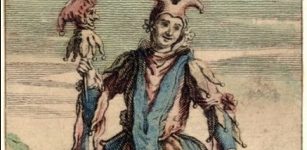 Troublesome Momus: Deity Of Irony, Ridicule, Sarcasm And Harmful Jokes In Greek And Roman Mythology
Featured Stories | Mar 14, 2022
Troublesome Momus: Deity Of Irony, Ridicule, Sarcasm And Harmful Jokes In Greek And Roman Mythology
Featured Stories | Mar 14, 2022 -
 On This Day In History: First Recorded Passage Of Halley’s Comet Observed By Chinese Astronomers – On Mar 30, 240 BC
News | Mar 30, 2016
On This Day In History: First Recorded Passage Of Halley’s Comet Observed By Chinese Astronomers – On Mar 30, 240 BC
News | Mar 30, 2016 -
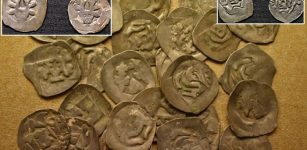 A Hoard Of Silver Coins Found Accidentally Under An Uprooted Tree Near Pieštany, Slovakia
Artifacts | Oct 28, 2020
A Hoard Of Silver Coins Found Accidentally Under An Uprooted Tree Near Pieštany, Slovakia
Artifacts | Oct 28, 2020 -
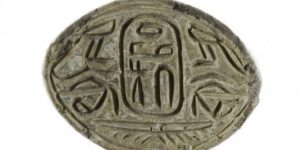 Hyksos: 15th Dynasty Rulers Of Ancient Egypt, Were An Internal Takeover
Archaeology | Jul 15, 2020
Hyksos: 15th Dynasty Rulers Of Ancient Egypt, Were An Internal Takeover
Archaeology | Jul 15, 2020 -
 Ancient Ruins Of Quilmes: Largest Pre-Colombian Settlement In Argentina
Featured Stories | Mar 28, 2019
Ancient Ruins Of Quilmes: Largest Pre-Colombian Settlement In Argentina
Featured Stories | Mar 28, 2019 -
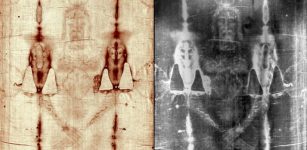 Blood Discovered On The Shroud Of Turin – Strand Of Jesus’ DNA Can Be Found – Researchers Say
Archaeology | Jul 19, 2017
Blood Discovered On The Shroud Of Turin – Strand Of Jesus’ DNA Can Be Found – Researchers Say
Archaeology | Jul 19, 2017
